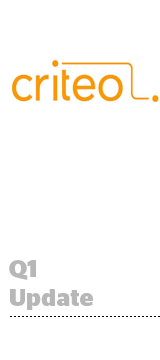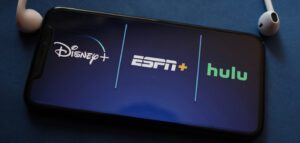 Since going public in Q4 2013, Criteo has had an easier time signing new advertisers – especially in Europe, where the business environment is more cautious overall and advertisers carefully examine credentials when making vendor selections.
Since going public in Q4 2013, Criteo has had an easier time signing new advertisers – especially in Europe, where the business environment is more cautious overall and advertisers carefully examine credentials when making vendor selections.
In the first quarter of this year, the French ad tech company’s business wins in the EMEA region included IKEA, Visa and Walbusch.
“New doors are opening (for us) as a public company,” CEO and co-founder Jean-Baptiste Rudelle told investors on the company’s Q1 earnings call Tuesday morning. “There are strong winds in Germany and the UK with new clients that were closed to us and now they’re opening the door. Europe tends to be more conservative and working with an established company is more important than in other regions.”
In the United States, Criteo has seen significant, if smaller-caliber, business wins such as Crocs, Rent.com and Talbots. And in the APAC region it nabbed NTT Docomo Travel. In all it now serves more than 5,500 advertisers.
Part of Criteo’s secret sauce is its direct publisher business. It sources media directly with over 7,000 media sellers, and added 600 in the first quarter alone. That’s larger than many scaled ad exchanges, as Rudelle points out.
During the quarter Criteo bought AdQuantic, a bidding technology company, in a talent-driven acquisition. And it agreed to buy Tedemis, a provider of real-time personalized email marketing.
Mobile Surges
Clients who turn on mobile are spending significantly more with Criteo than those with only desktop activated, according to Rudelle. For some of them, traffic sourced to mobile provides 25% of sales they earn through the Criteo platform.
Mobile contributed to 15% of Criteo’s revenue after traffic acquisition costs in March, compared with 10% in December and 2.5% in September. It has solutions for both browser and in-app ad delivery, and can offer so-called “deep linking” in apps. The click-through rate in mobile is as strong or stronger than desktop placements, while the probably more important “first-click conversion rate” that proves the clicks are intentional and not a result of “fat finger syndrome” are on parity with desktop.
“People in mobile are really engaged,” said Rudelle.
More details from the earnings release:
AdExchanger Daily
Get our editors’ roundup delivered to your inbox every weekday.
Daily Roundup
- Q1 revenues (Criteo’s fiscal Q4) grew 60.8% – 68.4% at constant currencies – to $109.4 million (€152.5 million), compared with $68.1 million (€94.9 million) in the first quarter 2013.
- Revenue excluding Traffic Acquisition Costs, or Revenue ex-TAC, in the first quarter 2014 grew 68.2% – or 75.7% at constant currencies.













